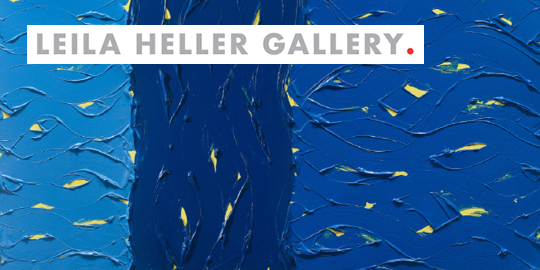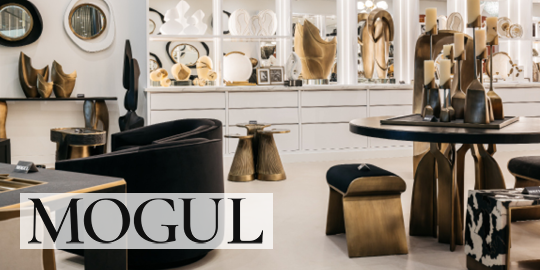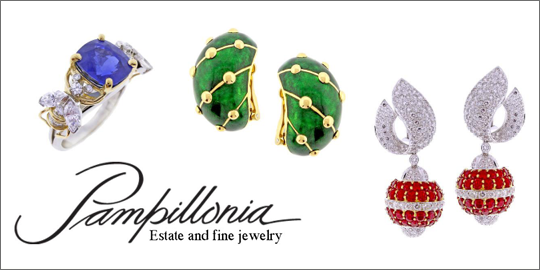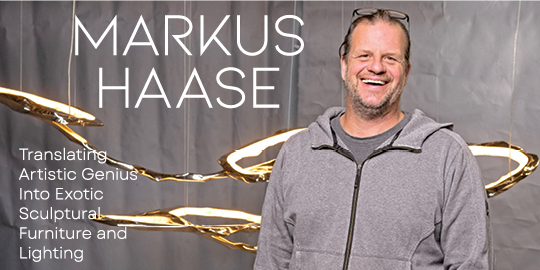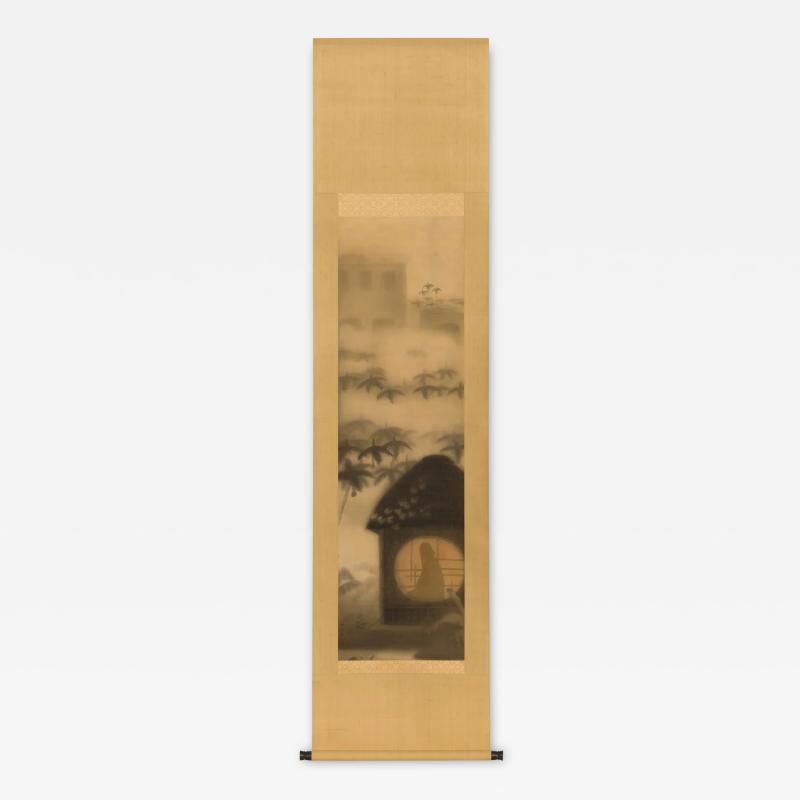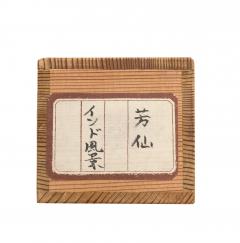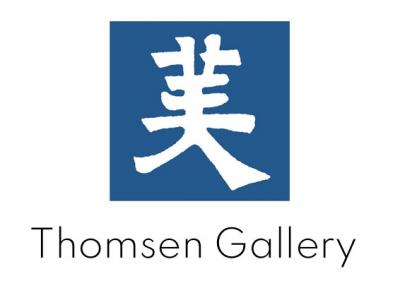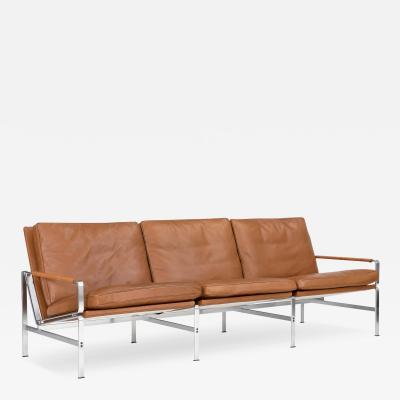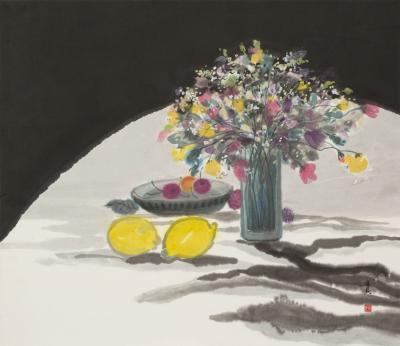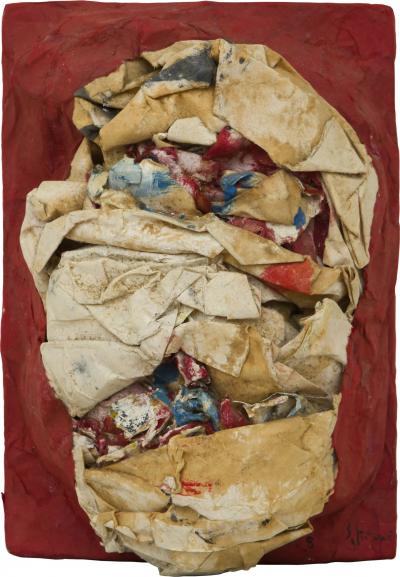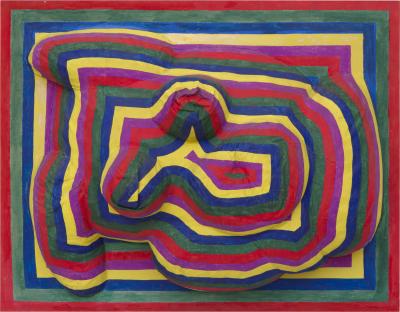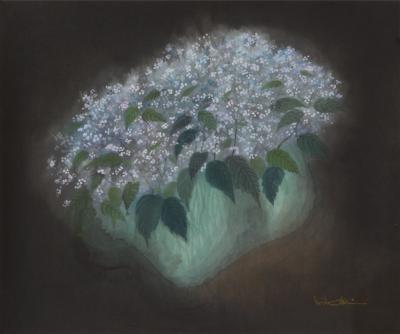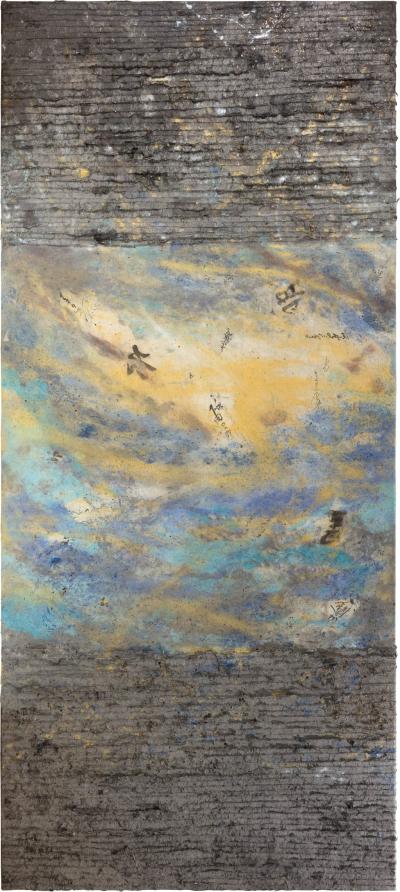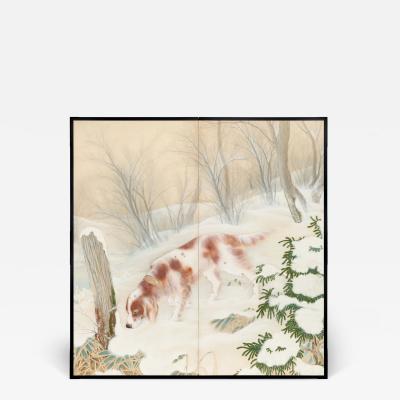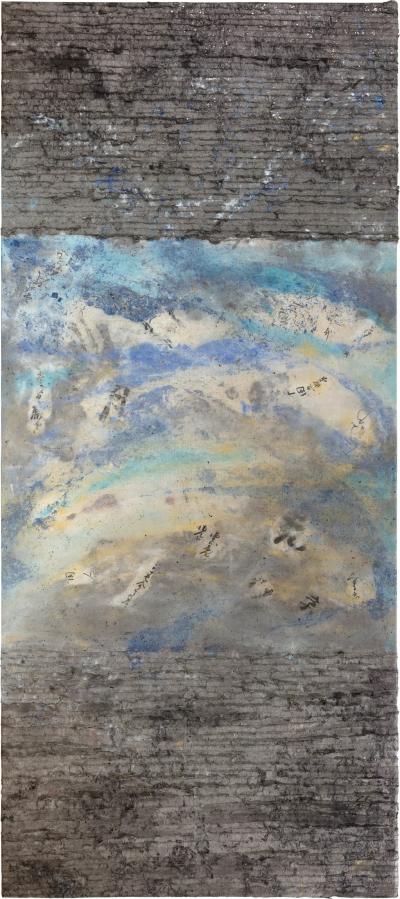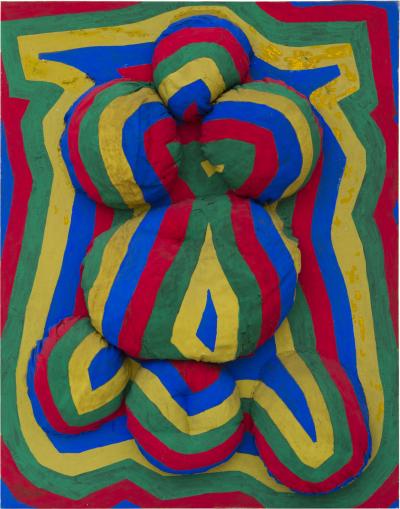Listings / Fine Art / Paintings / Figurative
Contemplation, 1920s-1930s
-
Description
Yoshihara Hōsen
Contemplation, 1920s-1930s
Hanging scroll; ink and mineral pigments on silk
Overall size 77 x 19 in. (196 x 48 cm)
Image size 47¼ x 13½ in. (120 x 34.3 cm)
T-4872
Signed at lower left Hōsen ga (Painted by Hōsen) and with an indistinct seal
Comes with a wood storage box labeled Yoshihara Hōsen Indo fūkei (Yoshihara Hōsen, Indian Scene)
Through the round window of a thatched hut, a vine climbing up its roof, we see the profile of a bearded figure, perhaps Rabindranath Tagore, seated in deep thought or meditation, the structure of the wall behind him creating a compelling abstract pattern. Western-style institutional buildings in the background suggest that the location might be Shantiniketan in Bengal, established by Devendranath Tagore and later expanded by his son Rabindranath as a cultural and artistic center. Banana plants and palm trees, half concealed in mist, suggest the humidity of a subtropical summer evening.
A native of Niigata Prefecture, during his thirties and forties Yoshihara, sometimes nicknamed “Himalaya Hōsen,” enjoyed a restless, globetrotting career. He dropped out of his local high school and from around 1912 trained with well-known painters including Suzuki Shōnen (1848-1918), Terasaki Kōgyō (1866-1919), Araki Jippo (1872-1944), and Nakamura Fusetsu (1866-1943), going on to receive gold and silver medals at exhibitions in Nagoya and Fukuoka in 1918 and 1919. He was awarded the art name Hōsen by Arai Sekizen (1864-1928), a prominent Sōtō Zen priest in Niigata who also gave him an introduction to the world-famous Bengali poet, philosopher, and nationalist Rabindranath Tagore (1861-1941). Leaving Japan in 1923 he traveled via Taiwan to India, enrolled at Tagore’s Kala Bhavana Institute of Fine Arts and studied under the master.
After spending part of 1926 trekking and sketching in the Himalayas, he began to exhibit his work in India, then journeyed by way of the Sahara Desert and Italy to Paris, exhibiting at the Salon in in 1929. He traveled extensively in Europe and spent six months in Rome, eventually returning to Japan via Singapore, China, and Korea, where he sketched extensively in the Diamond Mountain region. From 1933 until the end of World War II Yoshihara lived and sketched among the indigenous peoples of southeastern Taiwan, eventually setting up a studio in his native Niigata in 1950. In the latter part of the career, he focused mainly on ink painting and calligraphy. -
More Information
Documentation: Signed Period: 1920-1949 Condition: Good. Styles / Movements: Asian Art Incollect Reference #: 751881 -
Dimensions
W. 19 in; H. 77 in; W. 48.26 cm; H. 195.58 cm;
Message from Seller:
Thomsen Gallery, now located at 8 East 67th Street, New York City, NY 10065, specializes in important Japanese paintings, folding screens, hanging scrolls, ceramics, ikebana bamboo baskets, lacquerware, and contemporary works by select artists. Owned and directed by Erik and Cornelia Thomsen, the gallery brings decades of expertise in Japanese art to a global clientele, including private collectors and major museums. For inquiries, contact them at 212-288-2588 or info@thomsengallery.com.


